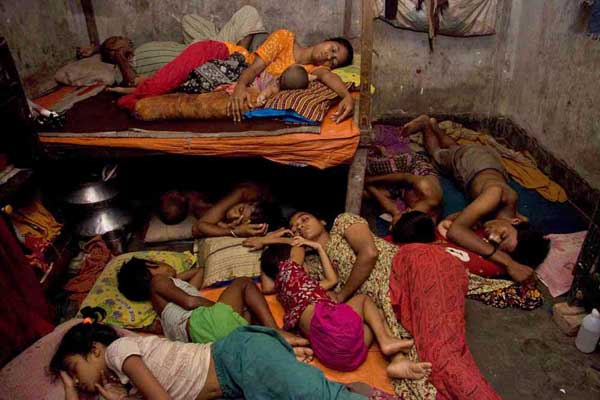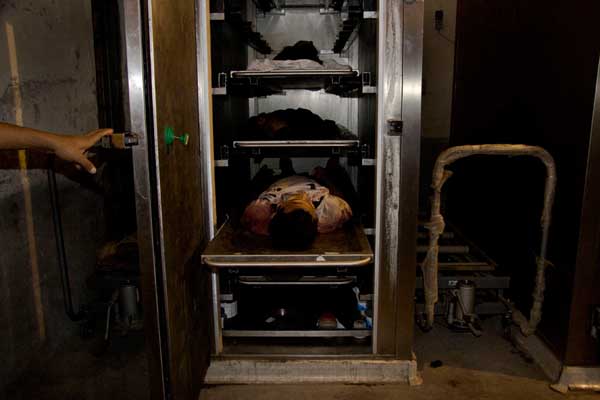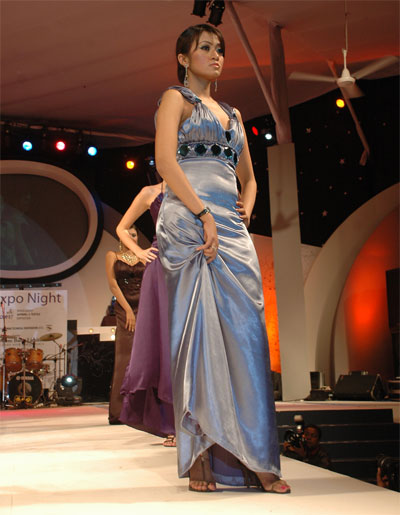Subscribe to ShahidulNews
By Rahnuma Ahmed

My heart was heavy on Victory Day.
On Dec 12, four people, including a rickshaw driver aged 35, were killed in Chittagong EPZ as garment workers clashed with police because the new wage structure when implemented, meant getting lesser wages. According to news reports, the management of South Korean-owned Youngone suddenly shut down all its units after workers protested the withdrawal of their Tk 250 lunch allowance. When 10,000 workers turned up for work on Sunday morning, they found the factory closed down for an indefinite period. Demonstrations and picketing took a violent turn when police opened fire with live bullets (600 rounds) and tear gas shells (150 canisters). Workers retaliated with brickbats, sticks and stones. The Deputy Commissioner (Port) in Chittagong claimed, rickshaw-driver Ariful Islam had died from a hurled brick; his employer however said, he had been shot dead. Eight injured persons had bullet wounds. Police filed cases against an unidentified 33,000.
Less than two days later, in the early hours of December 14, a contingent of 12 or so claiming to belong to the Detective Branch, all in plainclothes except 1, turned up at the Kola Bagan house of Moshrefa Mishu, president of Garments Workers Unity Forum. When her sister Jebunnessa wanted to see a warrant, they threatened to arrest her too. Mishu was only allowed to change her clothes, she had to leave her medicine behind: for asthma, and for a severe spinal injury from an attack on her life several years ago. She was produced in court after midday and remanded for 2 days on charges of inciting vandalism during worker unrest in Kuril (Kafrul, Dhaka) in June this year. At the end of 2 days, she was remanded for yet another day. She had Jamaat links, they alleged. It needed further investigation, they said.
Mishu? Remanded? For inciting vandalism? As we sat stunned with this news on the 14th, the gods played a cruel joke.
On December 14, a fire broke out in Ha-Meem Group’s sportswear factory in Ashulia, Dhaka. Fire spread to the dining area on the 10th floor where about 150 workers were having lunch. “Emergency exits were closed,” said Abdul Kader to Asia Times Online. To escape from the rapidly-spreading flames, 50-60 workers jumped off the tenth floor. Many, to their death.
Ha-Meem management says 23 died; hospital and clinic sources report 26 deaths, some newspapers report 31 but workers insist many more as relatives throng at the factory gates in search of missing family members. After being closed for two days to mourn the deaths of workers, it was re-opened on Friday, the weekly holiday, but also, a public holiday due to Ashura. The next day, a large chunk of concrete fell on the floor of the 8th floor, as the devastation caused by the fire was being repaired. Workers rushed out of the building fearing for their lives. At least 25 were injured.

According to the Fire Service and Civil Defence Department, fires broke out in 213 factories between 2006 and 2009. The number of deaths? 414. These figures include the Spectrum/Shahriyar Sweater factory collapse in 2005, when 64 workers were killed and 80 were injured, 54 seriously. It excludes the deaths caused by fire which broke out this February at Garib & Garib Sweater factory, built on marshy land. 21 workers’ died, another 50 were injured.
According to international groups dedicated to improving the working conditions of workers worldwide, the Bangladeshi garment industry is “notorious” for its bad safety record. Most of the deaths and injuries are entirely “preventable.” According to the Clean Clothes Campaign, a global network of labour and women’s rights organisations, Bangladeshi factory owners “blatantly violate building code and health and safety regulations”; the government (regardless of which party is in power) “fails to enforce these regulations.” At Garib & Garib, fire rapidly spread because the floors were filled with inflammable materials such as wool threads, workers who were cut off by the fire could not escape because emergency exits were locked; material piled-high blocked the stairways. Fire brigade officials said, the factory’s fire-fighting equipment was “virtually useless.”
The joke played by the gods was undoubtedly cruel since it snatched away many lives? 23? 26? 31? more??but it pointed fingers as well.
Has any factory owner ever been picked up by the police, remanded, arrested, and charged because of factory fires? Not that I know of. The officer-in-charge of Ashulia thana says, (only) a general diary has been lodged in connection with the fire at Ha-Meem. Interestingly, Ha-Meem Group’s managing director AK Azad is also the president of the Federation of Bangladesh Chambers of Commerce and Industry (FBCCI).
Just as factory fires are not properly investigated, neither are acts of vandalism. One hears ministers, high party officials, intellectuals-serving-party-interests and experts claim every so often that these are caused by `outsiders.’ But these `outside forces’ are never specified. Despite turf wars over waste cloth from the garment industry (jhoot baybsha). Despite cutthroat competition among some of the owners themselves. Despite rumours that some were initiated to claim insurance. Despite competition between exporting nations, too. It is much easier to demonise Mishu, other garment leaders, and workers in general. After all, who knows what Pandora’s box a genuine investigation will open?
Nearly three and half million work in the RMG sector, mostly women. It accounts for 80% of annual export earnings and makes clothes for major Western brands such as Wal-mart, Marks & Spencer, Carrefour, Tesco, JC Penny. In 2006, the monthly minimum wage was fixed at Tk 1,662 (US$23). Since then, despite spiralling prices and soaring living costs, garment workers had received no pay rises, although Bangladeshi labour law dictates that wages should be reassessed and adjusted every three years. The new minimum wage approved in August this year?at 3,000 taka ($43) it fell far short of labour union demands of 5,000 taka ($72)?was grudgingly agreed upon by owners, unwilling to give Eid bonuses according to the new wage structure. Last year, the president of Bangladesh Garment Manufacturers and Exporters Association (BGMEA) had demanded a 30 billion taka subsidy ($428 million) from the government’s stimulus package fund to pay workers wages and bonuses. It was outrageous even by AL government’s standards which, as Shahidullah Chowdhury, president, Bangladesh Trade Union Centre, points out, is “essentially biased” towards protecting and promoting the interests of the rich. The finance minister rejected it outright, leaving the BGMEA mumbling that it was an “error.”
Clashes occurred in November this year because many factories had either failed to implement what had been agreed upon, or had implemented it through applying a grading system which effectively “lessened” the pay of many workers.
As I write, I remember Mishu telling me many years ago, I seem to be spending my life fighting for basic rights, those that are declared in the ILO Convention, are laid down in Bangladesh law. Struggling for more fundamental changes, for the re-distribution of wealth and resources, is a far cry. These basic rights should be enforced by the government, she said. In its own interest.
Was muktijuddho not fought for ensuring economic and social justice? For changing the lives of the greater majority for the better? The Awami League and its intelligentsia would have us believe that it was fought only against religious forces who had collaborated with the Pakistan government and its army, a sore enough point for the nation given post-1971 events. Given that the war criminals of 1971 were politically restored, given that Jamaat-e-Islami became BNP’s electoral allies, became a part of the government. But the trial of war criminals is a national issue, it should not be subjugated to serve the narrow interests of the Awami League. Nor should we allow it to be capitalised upon by imperial forces, to draw us into the ever-expanding `war on terror.’

The adoption and pursuit of neo-liberal policies have led to the emergence of new forms of femininities in Bangladesh. Women pose, strut down the aisle. The closed-off, vacant look they are trained to wear makes it difficult to tell whether they know that the garments they parade are soaked in sweat. In tears. And, in blood. Of other women.
__________________________________________
Published in New Age, Monday December 20, 2010
